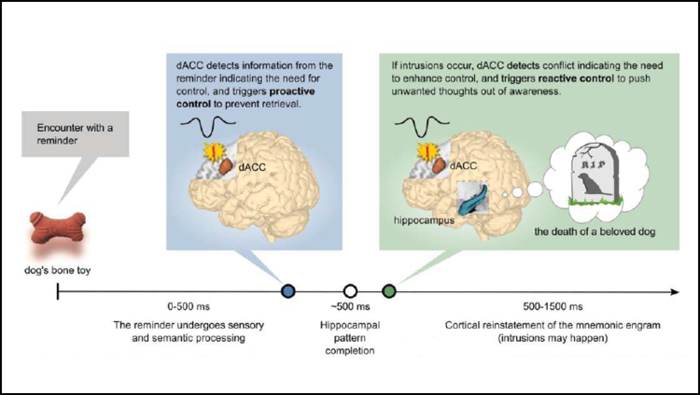Human brain has ‘alarm system’ to suppress intrusive thoughts
Increased activity in a region of the brain shows how it can inhibit unwanted memories, reports Aisha Rimi


A region of the human brain has an “alarm system” that helps inhibit intrusive thoughts, according to a new study.
This area proactively detects unwanted memories and alerts other regions of the brain to suppress them.
The study’s lead author Maité Crespo García and researchers said the mechanism is an example of “an adaptive ability of humans,” but concluded: “How and when reminders to unwelcome memories come to trigger prefrontal control mechanisms remains unknown.”
The study, published in JNeurosci, measured participants’ brain activity with both EEG and fMRI while they completed a memory task.
Volunteers memorised pairs of words, such as gate and train, and were asked to either recall the pair – see gate, think about train – or only focus on the cue word – see gate, only think about gate.
When the participants were proactively suppressing a memory, elevated activity was detected in the anterior cingulate cortex (ACC) within the first 500-milliseconds of the task.

The ACC is a region in the brain responsible for numerous functions, including emotional expression and awareness, decision making, pain management, attention allocation, and anticipation.
During the increased activity in the ACC, the region relayed information to the dorsolateral prefrontal cortex (DLPFC), which then inhibited activity in the hippocampus, a key region for memory recall.
The activity levels in the ACC and DLFPC remained low for the rest of the trial, a sign of success – the memory was stopped early enough so no more suppression was needed.
If the memory was not suppressed in time, the ACC generated a reactive alarm, increasing its activity to signal to the DLFPC to stop the intrusion.
“Here we acquired neuroimaging data with both high spatial and temporal resolution as participants suppressed specific memories,” explained the researchers.
“We found that the anterior cingulate cortex detects the need for memory control, responding both proactively to early warning signals about unwelcome content and reactively to intrusive thoughts themselves.”
“When unwanted traces emerge in awareness, anterior cingulate communicates with prefrontal cortex and triggers top-down inhibitory control over the hippocampus through specific neural oscillatory networks.”






Join our commenting forum
Join thought-provoking conversations, follow other Independent readers and see their replies
Comments